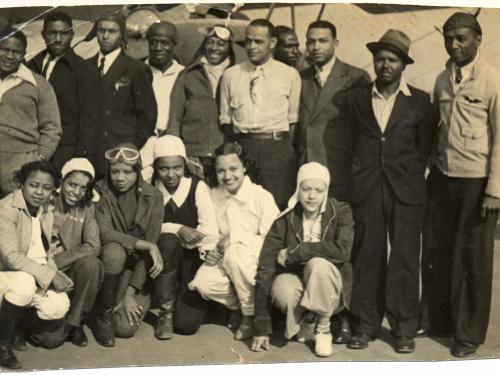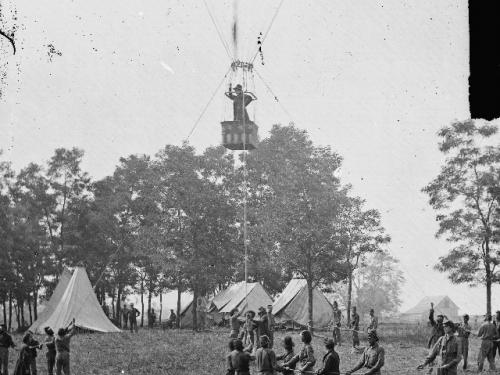
Stories of daring, stories of technological feats, stories of prevailing against the odds ... these are the stories we tell at the National Air and Space Museum. Dive in to the stories below to discover, learn, and be inspired.
Showing 641 - 650 of 698

March 13, 2011
For a number of years now, the United States has set aside February and March to celebrate Black History Month and National Women’s History Month, respectively. While these commemorations are praiseworthy, they should not disguise the fact that they have been rather contentious culturally. Some would argue that it is insulting to African Americans to celebrate their history for only one month every year. In the case of women, National Women’s History Month has become a call to arms in an ongoing struggle for women’s rights, to ensure educational and economic opportunities for all women, and for ending violence against them.

February 03, 2011
If you’re looking for some online fun, try out several Web activities from our newest exhibition, The Barron Hilton Pioneers of Flight Gallery. The exhibition introduces some of the colorful aviation personalities from the 1920s and 1930s.

February 02, 2011
I have a hunch that there aren't a lot of aerospace museums that could come up with an appropriate image for Groundhog Day, but it's at moments like this that the National Air and Space Museum's Archives Division really shows the range and depth of its holdings.

January 18, 2011
In 1909, military aviation began with the purchase of the Wright Military Flyer by the U.S. Army. The Navy sprouted wings two years later in 1911 with a number of significant firsts.

December 27, 2010
Ever since our colleagues over at the National Zoo introduced their seven beautiful lion cubs to the public, some of the staff here at the National Air and Space Museum have been feeling a bit envious. Yes, we have priceless historic artifacts like the 1903 Wright Flyer and the Spirit of St. Louis; but lacking a single lion cub or even a panda, we do have something of a cuteness gap - we simply can't compete with the Zoo when it comes down to Cute.

December 24, 2010
Although the reindeer-powered sleigh is the form of transportation most usually associated with Santa Claus, the right jolly old elf displays an unexpected interest in lighter than air flight by launching festive fire balloons over the North Pole while a polar bear watches admiringly. Santa wasn't the last to attempt an LTA mission to the Pole, though - on May 11, 1926, the airship Norge took off from Spitsbergen, Norway.

December 23, 2010
On December 23, 1986, nine days, three minutes, and 44 seconds after taking off, Dick Rutan and Jeana Yeager touched down at Edwards Air Force Base, CA, in the Rutan Voyager aircraft to finish the first flight around the world made without landing or refueling.

December 10, 2010
In 1929, the Curtiss Aeroplane and Motor Company merged with the Wright Aeronautical Corporation to form the Curtiss-Wright Corporation. The merger of these two companies created one of the largest aircraft manufacturers in the country, which held numerous patents for aircraft.

November 24, 2010
This week, the Museum moved its first aircraft into the Mary Baker Engen Restoration Hanger in the new wing of the Steven F. Udvar-Hazy Center in Chantilly, VA. The aircraft is the Curtiss SB2C Helldiver, the same type of aircraft flown by former Museum director, Don Engen during World War II.

November 18, 2010
Built in 1918, the Aircraft Building housed most of the Museum's aviation collection for decades. Taken in 1938, this photo also shows a tank and artillery piece displayed by the front door.
Featured in National Air and Space Museum: An Autobiography